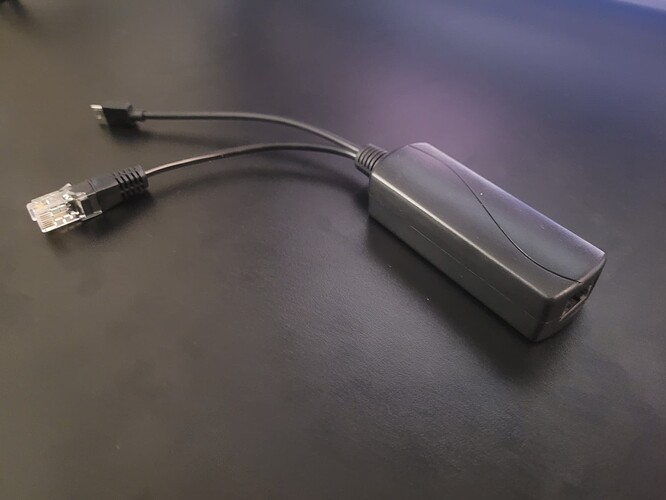Jest do tego w zestawie coś takiego:
Nazwy handlowej to chyba nie ma. Grzegorz nazywał to CC2652P wersja LAN.
Nie bo wcześniej działało bez problemu razem z BLE.
Konfiguracja ESP:
substitutions:
device_name: cc2652p2lan
friendly_name: LeMo cc2652p LAN
esphome:
name: ${device_name}
platform: ESP32
board: esp-wrover-kit
ethernet:
type: LAN8720
mdc_pin: GPIO23
mdio_pin: GPIO18
clk_mode: GPIO0_IN
phy_addr: 1
power_pin: GPIO16
#wifi:
# ssid: MyHomeNetwork
# password: VerySafePassword
# Optional manual IP
manual_ip:
static_ip: 192.168.1.78
gateway: 192.168.1.1
subnet: 255.255.255.0
logger:
level: DEBUG
api:
reboot_timeout: 0s
ota:
web_server:
port: 80
time:
- platform: homeassistant
id: homeassistant_time
#External component Stream Server
external_components:
- source: github://oxan/esphome-stream-server
# - source: components
# - source: github://thegroove/esphome-zeroconf
sensor:
- platform: uptime
id: uptime_s
update_interval: 300s
#FLORA
- platform: xiaomi_hhccjcy01
mac_address: '80:EA:CA:62:0B:B0'
temperature:
name: "mi temperature Flora"
moisture:
name: "mi moisture Flora"
illuminance:
name: "mi llluminance Flora"
conductivity:
name: "mi conductivity Flora"
#ŁAZIENIKA
- platform: atc_mithermometer
mac_address: "A4:C1:38:60:14:3E"
temperature:
name: "Lazienka Temperatura"
humidity:
name: "Lazienka Wilgotnosc"
battery_level:
name: "Lazienka Battery-Level"
battery_voltage:
name: "Lazienka Battery-Voltage"
signal_strength:
name: "Lazienka Signal"
## reszta urzadzen BLE
switch:
- platform: restart
name: "${friendly_name} Restart"
- platform: gpio
pin: 33
id: zRST_gpio
inverted: yes
restore_mode: ALWAYS_OFF
- platform: template
name: "cc2652p RST"
icon: mdi:toggle-switch
id: zRST
turn_on_action:
- switch.turn_on: zRST_gpio
- delay: 15ms
- switch.turn_off: zRST_gpio
- platform: gpio
pin: 32
name: "cc2652p BSL"
icon: mdi:toggle-switch
id: zBSL
inverted: yes
restore_mode: ALWAYS_OFF
internal: true
- platform: template
name: "cc2652p firmware update"
icon: mdi:cellphone-arrow-down
turn_on_action:
- script.execute: fw_update_mode
turn_off_action:
- switch.toggle: zRST
script:
- id: fw_update_mode
then:
- switch.turn_on: zBSL
- delay: 1s
- switch.turn_on: zRST_gpio
- delay: 1s
- switch.turn_off: zRST_gpio
- logger.log: "Delaying ~10 seconds for TI chip to be ready"
- delay: 10s
- switch.turn_off: zBSL
- logger.log: "Update with cc2538-bsl tool now!"
- logger.log: "Usage: cc2538-bsl.py -p socket://ip_or_hostname:6638 -evw firmware.hex"
#UART Settings
uart:
id: uart_bus
rx_pin: GPIO5
tx_pin: GPIO17
baud_rate: 115200
#Serial Bridge Settings,uncomment #port to change default 6638 TCP port
stream_server:
uart_id: uart_bus
# port: 1234
esp32_ble_tracker:
#zeroconf:
# - service: LeMo_cc2652p2lan
# protocol: tcp
# port: 6638
# txt:
# version: 1.0
# radio_type: znp
# baud_rate: 115200
# data_flow_control: software
Podłączone to było do zasilacza 5V 2A.
